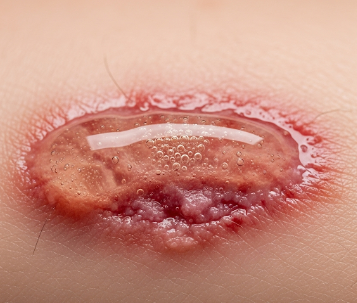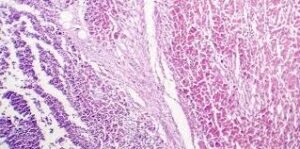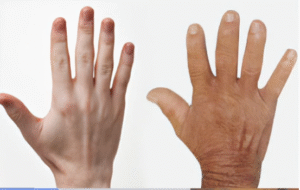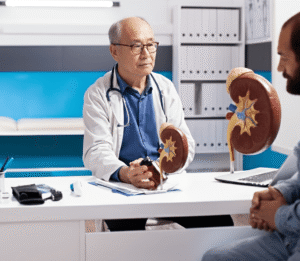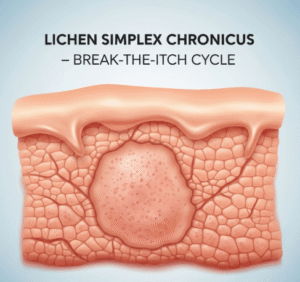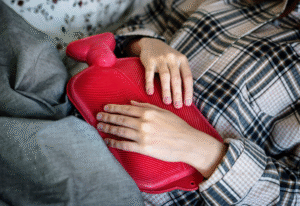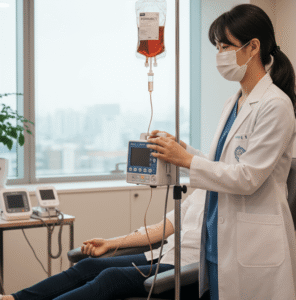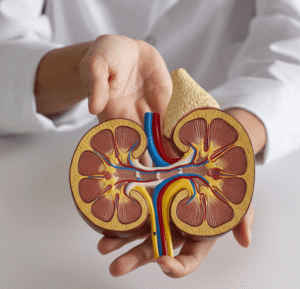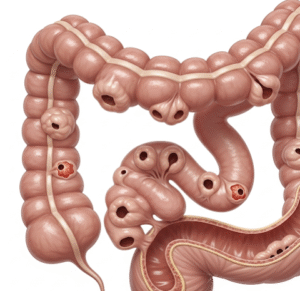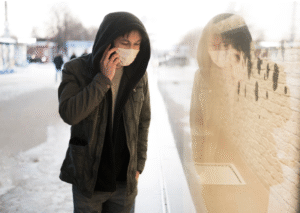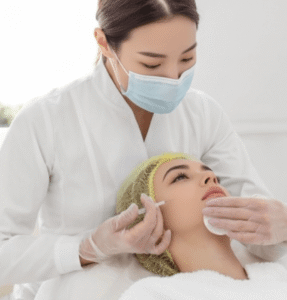➤ Overview
Serous drainage is a type of thin, clear, or slightly yellow fluid that may leak from wounds, surgical sites, or skin lesions. This drainage typically consists of serum, the liquid part of blood, and is a normal part of the body’s healing process. However, excessive, persistent, or foul-smelling serous drainage may indicate infection, delayed healing, or other complications.
In South Korea, serous drainage is carefully assessed by wound care specialists, dermatologists, and surgeons. Modern Korean medical facilities provide advanced wound management, monitoring, and intervention, ensuring optimal healing while preventing infection.
➤ Key Facts
→ Serous drainage is usually thin, watery, and clear or pale yellow.
→ It is composed of plasma and small amounts of proteins.
→ Typically appears within the first few days of wound healing.
→ Excessive or prolonged drainage may indicate infection or delayed healing.
→ Proper wound care prevents skin maceration and secondary complications.
→ In Korea, wound assessment and dressing changes are performed by trained specialists.
→ Monitoring drainage characteristics helps guide treatment and detect complications early.
➤ What is Serous Drainage?
Serous drainage is the clear or pale yellow fluid that leaks from minor wounds, surgical incisions, or skin abrasions. It is primarily composed of serum, the non-cellular component of blood, and plays a role in moistening tissues, delivering nutrients, and facilitating healing.
While serous drainage is often a normal part of the healing process, abnormal amounts, discoloration, or odor may suggest infection or other complications. Korean doctors use systematic evaluation methods to distinguish normal drainage from concerning patterns, ensuring safe and effective wound care.
➤ What Symptoms are Related to Serous Drainage?
Serous drainage may occur alongside other wound healing signs or symptoms:
→ Clear, watery fluid leaking from a wound.
→ Mild swelling or redness around the site.
→ Wound edges appearing moist and soft.
→ Minimal pain or tenderness, usually decreasing as healing progresses.
→ Gradual reduction of drainage over several days as the wound closes.
→ Persistent drainage may be accompanied by redness, warmth, or foul odor if infection occurs.
→ Delayed wound closure or tissue breakdown in chronic wounds.
➤ What Causes / Possible Causes?
Serous drainage typically occurs due to normal healing or minor tissue injury, but certain factors can influence its volume or duration:
→ Normal wound healing – Fluid exudes from small blood vessels as part of inflammation and repair.
→ Surgical wounds – Common in post-operative healing, especially in areas under tension.
→ Blisters or skin abrasions – Minor injuries can produce serous fluid.
→ Infections – Early-stage infections may produce serous or serosanguinous drainage.
→ Inflammatory conditions – Burns, eczema, or dermatitis may cause serous exudate.
→ Chronic wounds – Pressure ulcers or diabetic ulcers may persistently produce serous fluid.
→ Allergic reactions or trauma – Minor skin injuries may leak serum as part of the repair process.
➤ When Should I See My Doctor?
Medical attention is warranted if serous drainage is abnormal or accompanied by other warning signs:
→ Drainage becomes thick, cloudy, or foul-smelling.
→ Redness, warmth, or swelling spreads around the wound.
→ Presence of pus or blood in significant amounts.
→ Pain increases instead of gradually decreasing.
→ Wound does not heal within expected timeframes.
→ You notice fever, malaise, or other systemic signs of infection.
→ Chronic wounds continue draining fluid for weeks without improvement.
➤ Care and Treatment
Proper care for serous drainage involves cleaning, protection, and monitoring:
→ Regular wound cleaning with mild saline or antiseptic solutions.
→ Sterile dressing changes to absorb fluid and maintain a clean environment.
→ Moist wound dressings – Hydrocolloid or foam dressings help manage fluid and protect tissue.
→ Avoid excessive manipulation – Reduces risk of trauma and secondary infection.
→ Topical medications – Antimicrobial creams if infection is suspected.
→ Compression or supportive care – For post-surgical or leg wounds to reduce edema.
→ Monitor drainage characteristics – Color, odor, and amount indicate healing progress.
→ Pain management – Mild analgesics may be used if tenderness is present.
➤ Treatment Options in Korea
South Korea provides advanced wound management for serous drainage with a focus on prevention, monitoring, and treatment of complications:
Diagnosis in Korea
→ Wound assessment by specialized nurses, dermatologists, or surgeons.
→ Photographic and measurement documentation to track healing.
→ Laboratory tests if infection or chronic inflammation is suspected.
Medical Treatments in Korea
→ Antimicrobial or antiseptic topical therapies for minor infections.
→ Specialized absorbent dressings designed for serous exudate.
→ Debridement if non-viable tissue is present.
Advanced Therapies in Korea
→ Negative-pressure wound therapy (NPWT) for wounds with persistent drainage.
→ Moist wound healing systems to maintain optimal environment and promote closure.
→ Skin grafts or tissue substitutes in chronic or complex wounds.
Rehabilitation & Support in Korea
→ Patient education on wound hygiene, dressing changes, and signs of infection.
→ Nutritional counseling to support tissue repair and immune function.
→ Ongoing monitoring through specialized wound clinics for high-risk patients.

